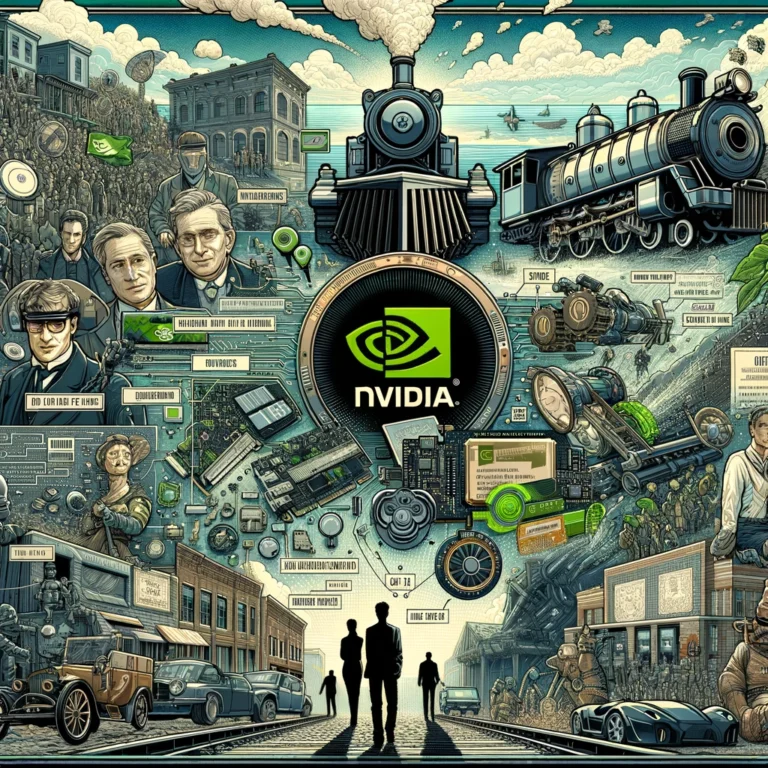NVIDIA Corporation, a name synonymous with cutting-edge graphics technology and innovation, was founded on April 5, 1993, by Jensen Huang, Chris Malachowsky, and Curtis Priem. The trio aimed to transform the nascent graphics industry by focusing on the development of high-performance graphics processing units (GPUs). Their vision was rooted in the belief that the PC would become a central hub for multimedia and entertainment, requiring more advanced graphics capabilities.
The Birth of the GPU
In 1995, NVIDIA launched its first product, the NV1, a multimedia accelerator that integrated 2D and 3D graphics, audio, and video. Although the NV1 was technologically advanced, it faced compatibility issues with existing games and software, limiting its success. However, this initial setback did not deter NVIDIA. The company’s breakthrough came in 1999 with the introduction of the GeForce 256, the world’s first GPU. This revolutionary product delivered unprecedented performance by offloading complex graphics calculations from the CPU, setting a new standard in the industry.
Rapid Growth and Market Leadership
The early 2000s marked a period of rapid growth for NVIDIA. The company continued to innovate with successive generations of GPUs, each more powerful and efficient than its predecessor. In 2000, NVIDIA acquired 3dfx, a leading graphics technology company, solidifying its market position. The launch of the GeForce 3 in 2001 introduced programmable shaders, further enhancing the realism of computer graphics and expanding the possibilities for developers.
NVIDIA’s dominance in the gaming industry grew with the release of the GeForce 8800 GTX in 2006, which set new benchmarks for performance and image quality. The company’s GPUs became the hardware of choice for gamers, professional designers, and researchers alike.
Diversification and Expansion
Recognizing the potential of its parallel processing capabilities beyond gaming, NVIDIA began to diversify its product offerings. In 2006, the company introduced CUDA (Compute Unified Device Architecture), a parallel computing platform and application programming interface model. CUDA allowed developers to harness the power of GPUs for general-purpose computing, enabling significant advancements in scientific research, data analysis, and artificial intelligence (AI).
NVIDIA’s foray into AI and deep learning proved transformative. The company’s GPUs became the backbone of AI research, powering breakthroughs in image and speech recognition, autonomous vehicles, and more. Partnerships with major tech companies and research institutions cemented NVIDIA’s role as a leader in AI technology.
Recent Innovations and Future Prospects
In recent years, NVIDIA has continued to push the boundaries of technology. The launch of the Turing architecture in 2018 introduced real-time ray tracing, revolutionizing the realism of graphics in gaming and professional visualization. The company’s data center GPUs, such as the A100, have become integral to the infrastructure of AI and cloud computing.
In 2020, NVIDIA announced its acquisition of ARM Holdings, a move poised to further expand its influence in the semiconductor industry and accelerate the development of AI, IoT, and edge computing solutions.
Financial Success and Market Impact
NVIDIA’s financial growth has mirrored its technological advancements. From its IPO in 1999 to becoming a trillion-dollar company in 2023, NVIDIA’s market capitalization and revenue have soared. As of 2024, NVIDIA’s net worth is estimated to be over $1 trillion, reflecting its dominant position in the tech industry.
NVIDIA’s journey from a startup to a global leader in graphics and computing is a testament to its relentless pursuit of innovation and excellence. By continually pushing the boundaries of what is possible, NVIDIA has not only revolutionized the gaming industry but also paved the way for groundbreaking advancements in AI, scientific research, and more. With its continued focus on cutting-edge technology and strategic growth, NVIDIA is poised to shape the future of computing for years to come.

